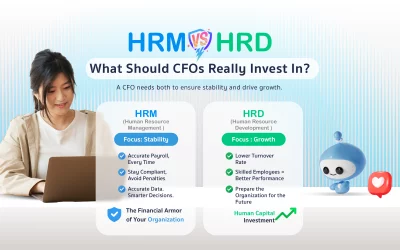Performance evaluations don’t have to be the dreaded task they’re often made out to be! With the right structure, they can turn into powerful growth opportunities for both employees and organizations. When you shift your focus from just judging past performance to enabling future success, it can make all the difference. So, let’s dive into the three essential ingredients that can transform your performance review process into a winning formula.
1. Clear Objectives & Expectations
In many companies, goals are set at the top and trickle down, leaving employees to play catch-up. But here’s the thing: the people who know what they need to achieve are often the employees themselves. When goals feel like they’re being handed down from on high, it can rob employees of their sense of autonomy and turn them into task-doers rather than passionate, innovative contributors.
That’s why the performance enablement approach is so awesome! It puts employees and managers on the same team, collaborating to create goals that connect with the company’s bigger mission. Clear, measurable goals don’t just make the process smoother; they help keep performance evaluations fair, objective, and free from any hidden biases. Employees know exactly what they’re aiming for, and managers can give targeted feedback that’s useful for improvement. Plus, it keeps everyone aligned, boosting motivation and making sure everyone’s moving in the same direction.
2. Regular Check-Ins & Feedback
No more “set it and forget it” when it comes to performance! Waiting until the annual review to talk about performance can leave employees feeling like they’ve been working in a vacuum for months. By the time that review comes around, goals might be outdated, and employees might be disengaged.
Enter the magic of regular check-ins! These frequent conversations allow managers to offer real-time feedback and support, addressing any roadblocks early on. Continuous check-ins also create a space for open dialogue, ensuring that employees feel heard and understood. And because feedback is ongoing, performance evaluations aren’t based on one isolated moment in time; they’re a reflection of the employee’s performance over the year. This keeps everything relevant and connected to their real progress.
3. Comprehensive Evaluation Criteria
Here’s where the magic happens: balancing the numbers with the nuances. Too many performance evaluations are stuck in either a strictly quantitative world (focusing on numbers, stats, and hard metrics) or a purely qualitative world (based on opinions, feedback, and “soft” skills). But let’s be real – both are important.
A truly effective evaluation combines both. Quantitative data gives you the hard facts and benchmarks, but qualitative feedback captures the full picture – like creativity, teamwork, and problem-solving. With a performance enablement approach, you get the best of both worlds. You’re able to highlight achievements AND growth, creating a more well-rounded and fair evaluation. It’s a comprehensive approach that helps everyone see not just what’s been accomplished, but also where they can go next.
Source :
- https://business.expertjournals.com/23446781-1005/
- https://hbr.org/2022/07/how-to-conduct-a-great-performance-review
- https://www.betterworks.com/magazine/employee-performance-evaluation/





